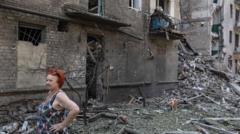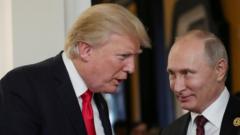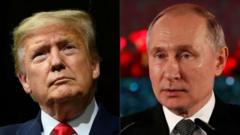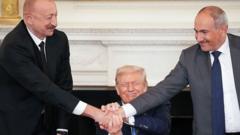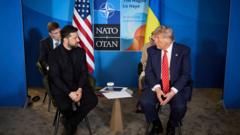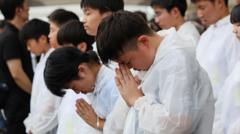As NATO leaders gather for a critical summit, President Trump's focus on defense spending and skepticism of multilateralism shapes the agenda, overshadowing deeper issues like the Russian threat.**
Trump's Dominance Overshadows NATO Summit Decisions**
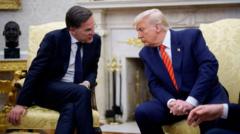
Trump's Dominance Overshadows NATO Summit Decisions**
Amidst tensions and external threats, NATO leaders prioritize defense spending discussions heavily influenced by Trump.**
NATO’s upcoming summit is set to unfold at The Hague, where 32 nations will converge to discuss pressing defense challenges. However, the spotlight is firmly trained on one individual: U.S. President Donald Trump. Secretary General Mark Rutte has orchestrated the summit with Trump’s preferences in mind, notably emphasizing the calls for increased defense expenditure from European allies—an approach that could still reflect ongoing transatlantic tensions.
Over the course of two days, the summit aims to reinforce NATO’s unity, but controversies surrounding issues such as trade relations, the conflicts in the Middle East, and Russian aggression remain unresolved. Trump, known for his "America First" policy that questions collective international efforts, has voiced strong criticism of NATO’s framework while demanding greater financial contributions from allies towards defense budgets.
Interestingly, this year’s summit, costing a staggering €183.4m (£155m; $210m), is unusually brief—lasting only three hours. The reduced time allocated for discussions and a five-paragraph summit statement appear to cater to Trump's well-documented preference for concise meetings. Experts speculate this shortened format may serve to obscure deeper divisions among member nations, particularly regarding Russia policy.
Despite Trump’s assertive stance on military spending, expectations abound that many NATO allies will struggle to align with the new target—a major increase to 3.5% of GDP by 2035, alongside vague definitions of defense-related expenditures that may lead to discrepancies. Nations like Poland, Estonia, and Lithuania have already begun ramping up their budgets in response to both Trump’s pressures and the wider implications of Russia’s ongoing military activities in Ukraine. Past commitments, such as the previous target of 2%, remain unmet for some.
Rutte’s approach to satisfy the U.S. has its critics, with ramifications for alliances still uncertain amidst fluctuating levels of commitment from member countries. As many European states prepare to finalize their contributions, points of contention remain—especially regarding Russia’s encroachments.
While President Zelensky of Ukraine has been invited to a summit dinner, he will not participate in crucial discussions, highlighting a rift in NATO perspectives on security challenges, particularly concerning the support against Russian aggression. The summit may prove to be less a platform for addressing these divides and more a stage for Trump to assert his influence, leaving many allies with unresolved concerns over their collective defense strategy.
In a world where clear consensus on how to address the looming threat from Russia seems fleeting, the true test of NATO's unity—and the ability to counter a potential escalation—may not materialize amid the glare of Trump’s dominance at the summit.




